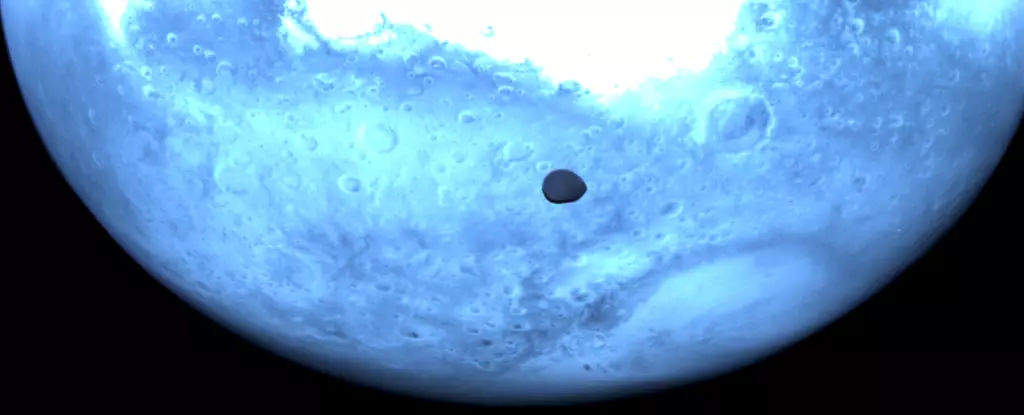The European Space Agency’s (ESA) HERA mission is on an ambitious journey, not just to unlock the mysteries of an asteroid collision, but also, serendipitously, to explore Mars and its smaller moon, Deimos. The spacecraft’s flyby of Mars was a remarkable maneuver that exemplified how interplanetary missions can capitalize on gravity assists to conserve fuel and enhance trajectory efficiency. This type of approach is vital not only for the success of HERA but for future missions aiming at distant celestial bodies.
During its recent ascent close to Mars, HERA utilized the planet’s gravity, specifically a technique known as gravitational slingshot, to accelerate its pace towards an asteroid located 11 million kilometers away in the asteroid belt. Such advanced navigational tactics highlight the evolution of space technology, showcasing our increasing sophistication in space exploration. While HERA is not set to arrive at its asteroid target until late 2026, the intriguing side-trip to Mars serves multiple scientific purposes.
Capturing Rare Moments of Deimos
The spacecraft’s swift approach to Mars allowed it to capture approximately 600 images, including rare snapshots of the nearly 12.5-kilometer-wide moon, Deimos. This moment is particularly significant as Deimos has been overshadowed for years by its more prominent sibling, Phobos. The images retrieved during this flyby represent a valuable opportunity for planetary scientists striving to piece together the origins of these Martian moons.
The ambiguity of Deimos’ origin remains a tantalizing puzzle. Some scientists posit that both moons might have been asteroids captured by Mars’ gravitational pull, while others theorize that large impacts on Mars might have ejected the material that formed them. The fresh data from HERA’s HyperScout and thermal infrared imagers intends to elucidate these speculations by revealing intricate details about Deimos’ surface composition. The unique infrared observations are so advanced that they yield images portraying Mars in unexpected shades of blue, an artistic representation of the data that can captivate both scientists and the public alike.
Unraveling the Asteroid Defense Strategy
As HERA’s primary mission stabilizes, it will shift its focus back to the asteroid Dimorphos, the target of NASA’s DART mission, which recently made headlines for its spectacular impact experiment. By successfully altering Dimorphos’ orbit, this mission initiated a groundbreaking study in planetary defense strategies. The ramifications of DART’s achievements in asteroid deflection could defy conventional understandings of how to protect Earth from potential cosmic threats.
ESA’s HERA mission aims to gather crucial data on the aftermath of DART’s intervention. Understanding whether this asteroid redirection technique can be genuine Earth defense strategy brings a sense of urgency to the mission. Cosmic threats, like the fleeting peril posed by the 2024 YR asteroid, indicate that monitoring space for potentially hazardous objects is more critical than ever. Richard Moissl, leading the ESA’s planetary defense team, highlights how such discoveries may soon become routine, enhancing humanity’s vigilance against the vast uncertainties of space.
Future Prospects in Planetary Defense
These endeavors are paving the way for a new age of planetary defense initiatives. ESA is planning yet another mission, named Ramses, intended to provide insight into the larger Apophis asteroid, which is projected to come alarmingly close to Earth in April 2029. If approved, the Ramses mission would be extraordinary, not only for its scientific objectives but also for its long-term implications for planetary safety.
The vision of harnessing space technology to protect Earth illustrates a revolutionary shift in our approach to astronomy and planetary exploration. It’s not merely about studying celestial bodies anymore; it’s about actively safeguarding our planet from cosmic uncertainties. The ongoing efforts by organizations like ESA and NASA demonstrate a commitment to a pragmatic approach in a world where existential threats can originate from the very heavens above us.
Overall, as ESA’s HERA mission glides through the cosmos, it signifies a remarkable fusion of curiosity, innovation, and responsibility—a testament to the daring spirit of human exploration.

